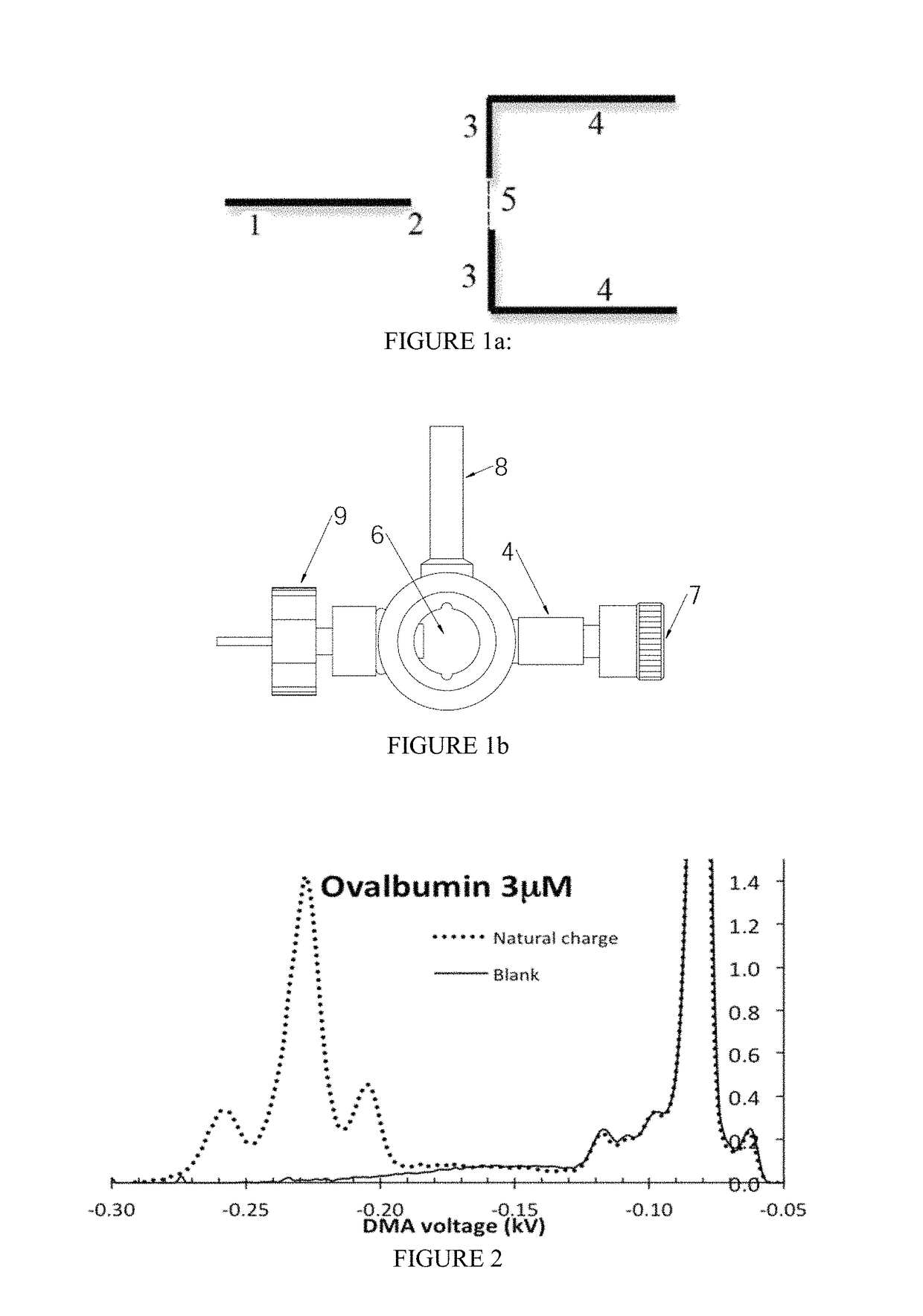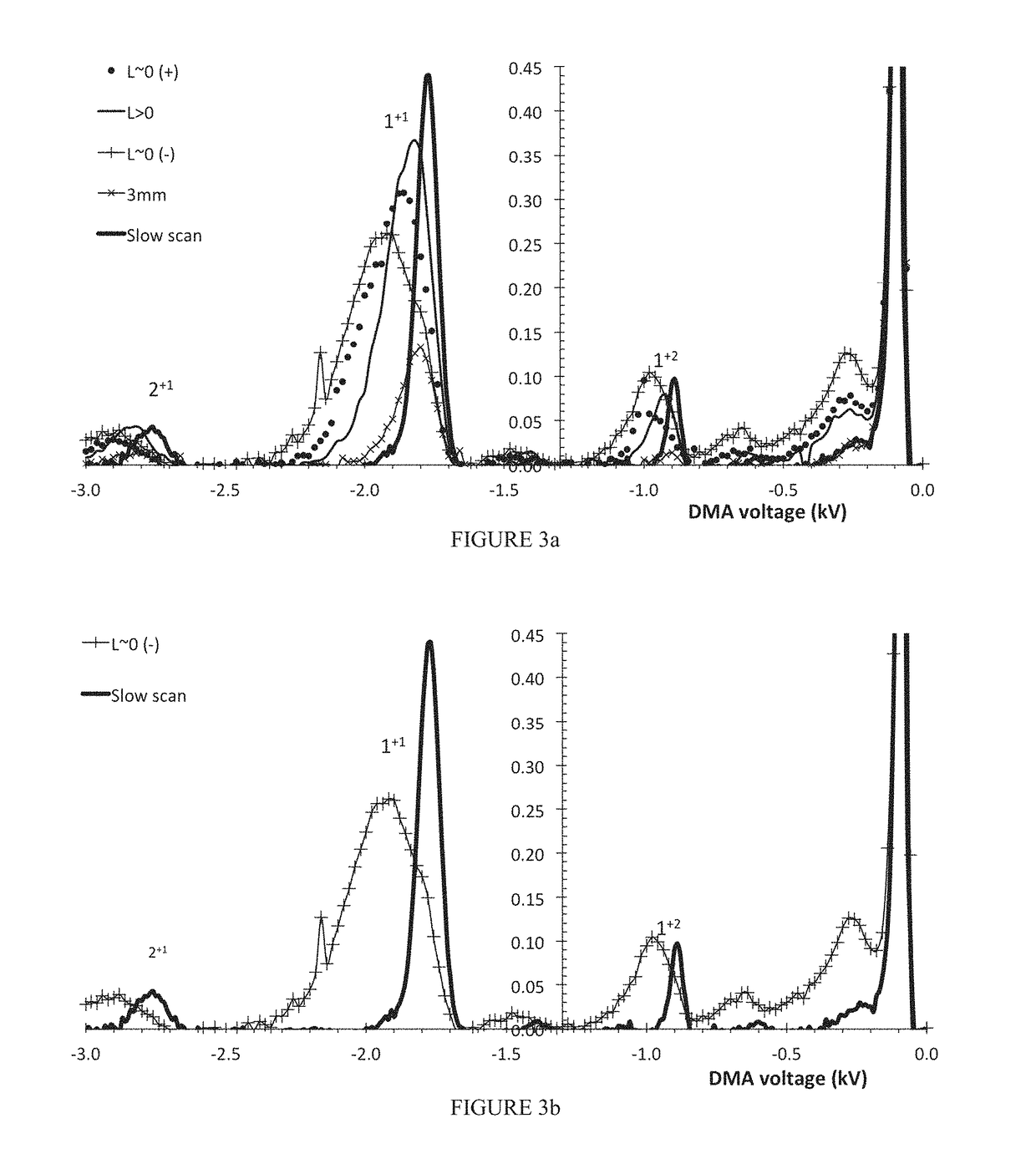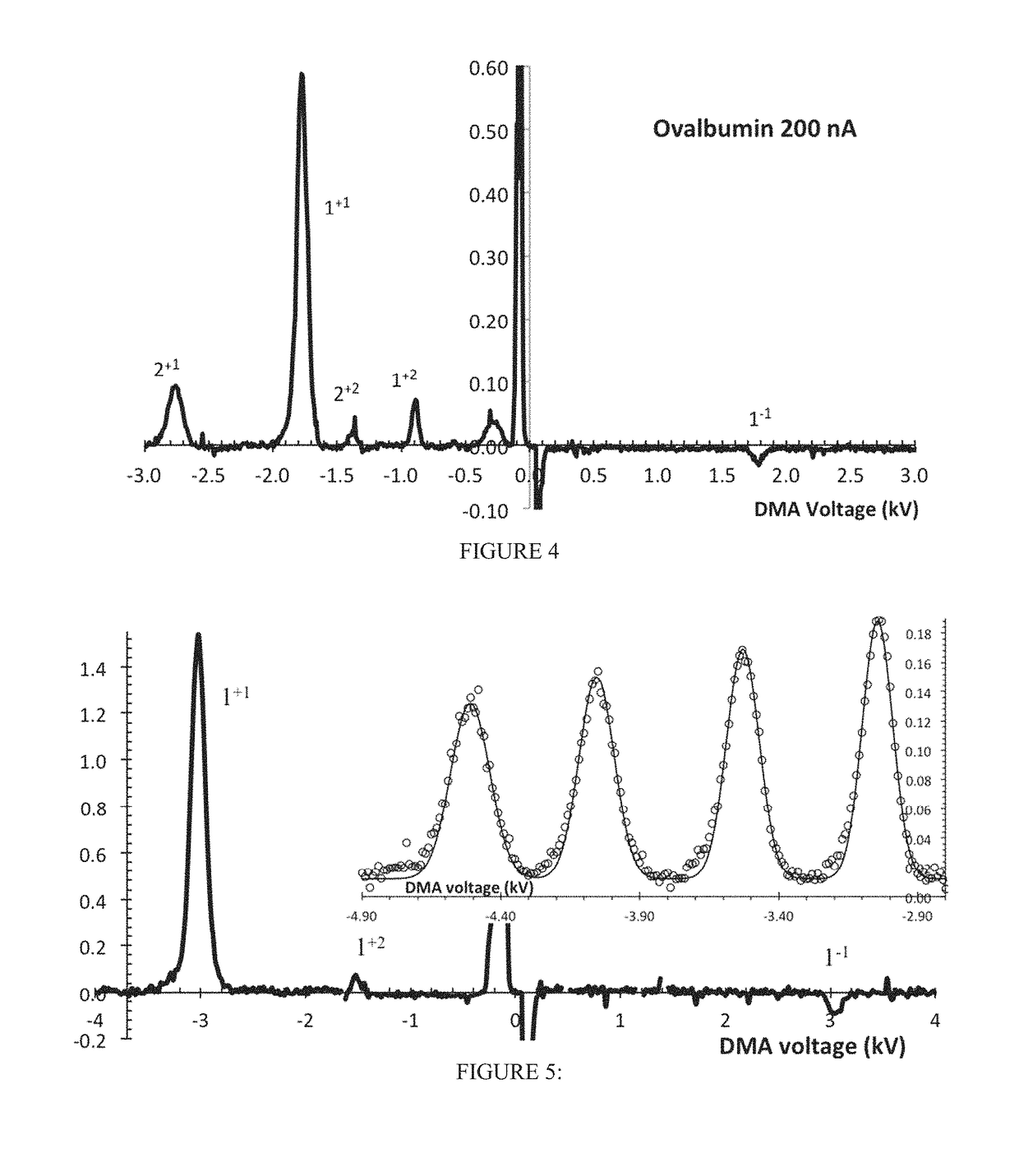High resolution mobility analysis of large charge-reduced electrospray ions
a charge-reduction and mobility analysis technology, applied in the field of high-resolution mobility analysis of large charge-reduction electrospray ions, can solve the problems of unresolvable spectral complexity, unfavorable ms detectors in studies, and the drastic level of charge reduction is not easily made incompatible with the limited mass range of ms detectors, so as to avoid destabilization of electrospray, improve the mobility peaks, and improve the effect of i
- Summary
- Abstract
- Description
- Claims
- Application Information
AI Technical Summary
Benefits of technology
Problems solved by technology
Method used
Image
Examples
Embodiment Construction
[0031]FIGS. 1a and 1b show the internal and external disposition of a simple ES charge-reduction design addressing various key elements of the invention. Among the internal elements, the ES capillary (1) supplies the sample solution to the electrospraying meniscus tip (2) supporting a Taylor cone, raised to a high voltage with respect to neighboring electrodes. This spraying tip (2) faces an opening (3) on a relatively thin-plate, leading to a charge reduction chamber internally coated with radioactive Ni-63 (4). In a preferred embodiment a conducting grid (5) covers partially the perforation in plate (3). This grid (5) limits penetration of the electric field generated by the capillary tip (2) into the charge reduction chamber (4). Thus, the field-driven flow of counterions from the charge-reduction chamber into the electrospraying tip is greatly reduced. Grid (5) therefore precludes destabilization of the Taylor cone in (2), even when the electrospraying tip (2) is brought very cl...
PUM
 Login to View More
Login to View More Abstract
Description
Claims
Application Information
 Login to View More
Login to View More - R&D
- Intellectual Property
- Life Sciences
- Materials
- Tech Scout
- Unparalleled Data Quality
- Higher Quality Content
- 60% Fewer Hallucinations
Browse by: Latest US Patents, China's latest patents, Technical Efficacy Thesaurus, Application Domain, Technology Topic, Popular Technical Reports.
© 2025 PatSnap. All rights reserved.Legal|Privacy policy|Modern Slavery Act Transparency Statement|Sitemap|About US| Contact US: help@patsnap.com



